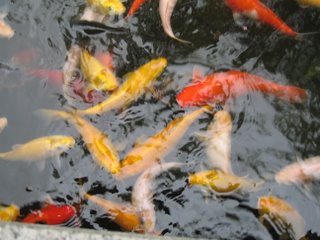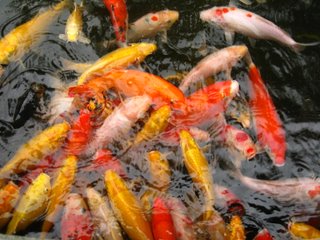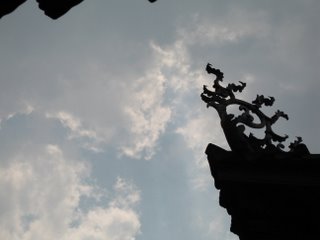
My friend James @ RPS in Oakland
Sylvia, my beloved, roves in dreams, an oblivious sylph.
Today I recount some memories of my East European tour that I took last year. It was during late June through early July, 2005. I visited six countries with 3 others who were performing.
The first stop was in Tallinn, Estonia. Andres Loos & Hanno Soans met Mic & me at the airport, we arrived a few days prior to the performance. Andres & Hanno are founders of Looming -makers & shakers of the Estonian art scene- plus they are really swell guys. Since I had never been to Europe (or anywhere really), Tallinn was a pretty unique in my experience. It has vestiges of its medieval identity: castle walls, churches everywhere, winding, narrow, cobblestone streets. We arrived around the "holidays", that is, St. John's Day, which is basically a summer solstice holiday. The streets were nearly emptied and many shops were closed. It would be as though you came to a smaller U.S. city on Christmas.
So was the first impression I had of Tallinn, a quiet and provincial town. Since it was near the summer solstice, it was also during the "white nights", when the sun never really sets. Instead of darkness- you get half-lit, crepusclar evenings. Its quite a eeie feeling to be up at 3AM and feel that it was more like 8AM. The guesthouse we all stayed in was amazingly cozy. It spoiled me for what was to come on the rest of this tour. The best thing was the atrium room; it had windows on all sides and looked out over the small street where the building was located.
Estonia, for some reason, really touched my heart. The collusion of a very old world and a modern world enamoured me. It triggered both my intellectual and emotional parts; perhaps, because it was the first European place I have ever visited, and all of Europe holds these contradictions. It is something that I have not encountered at all in America. I feel as though I met and conversed with an individual who had an emotional wisdom and mature grace yet was still flexible and open to newness. Nevertheless, the Baltic states in particular really held me. So much, in fact, I even bought a book about it at the book sale.
I mostly wandered around in Tallinn. I walked its labyrinthine streets, up and around the hill where we were staying, through the old town. We visited a little photography museum, a old bookstore and a few churches. But mostly I liked to wander around, drinking Tetly tea.
What I remembered most about Estonia: the linden trees that lined the streets, the warm and mild weather, the glimmering and calm quality of light, my sense of freedom. As for food, we did eat at a "traditional" Estonian restaurant, but I don't remember it very well. My favourite meal was the one Andres made for us on our first evening. It was a simple meal made of herring, potatoes, dill and sour cream, but it delicious. So good, that I wanted to re-create it , but I never could get it right.
go here for my pictures of Tallinn

























